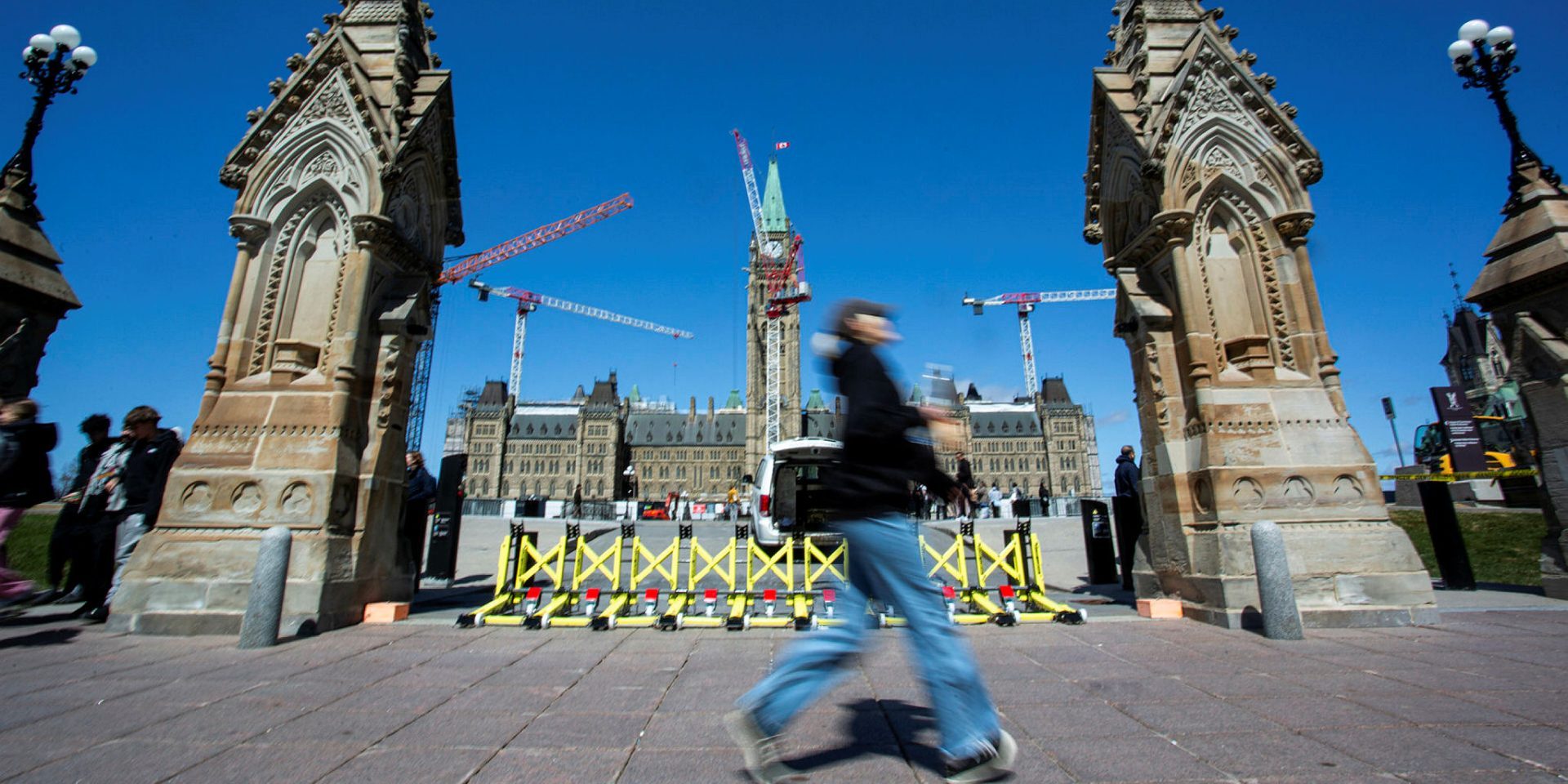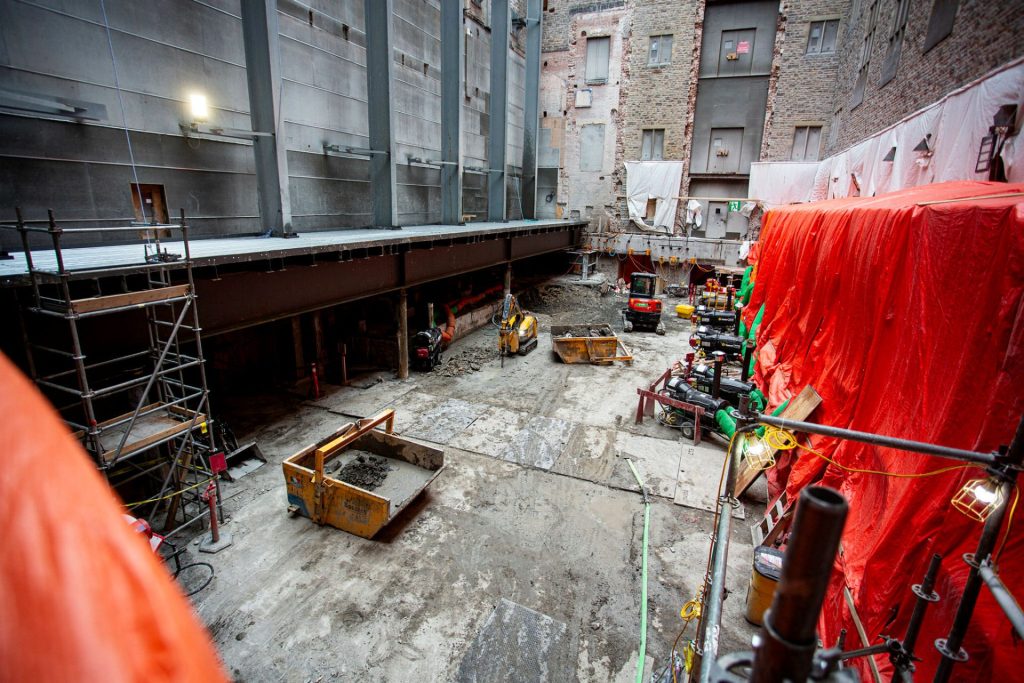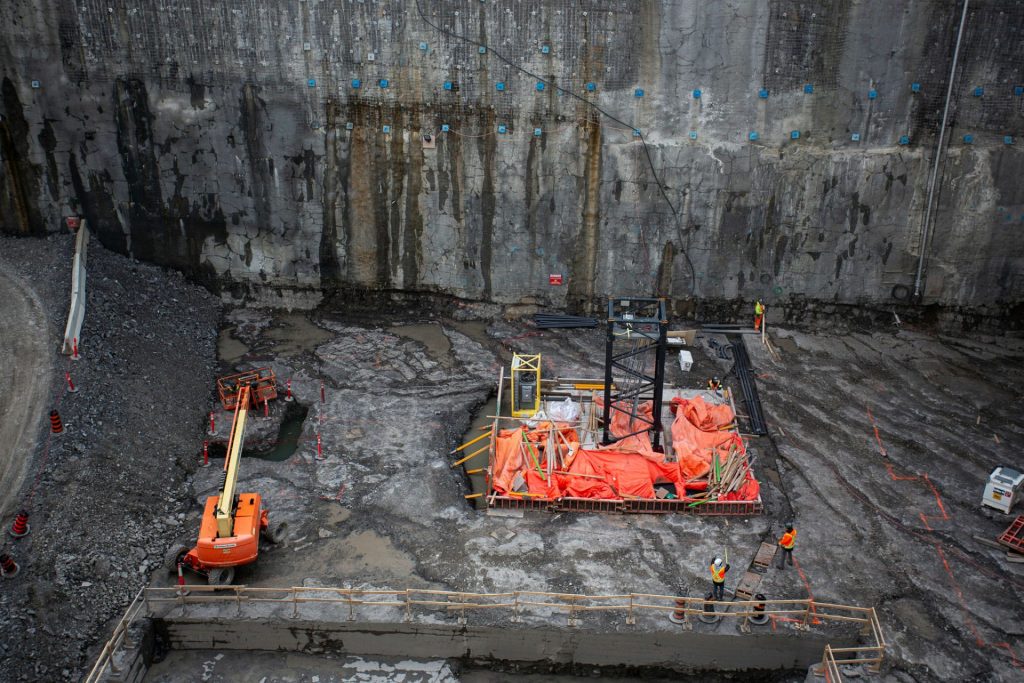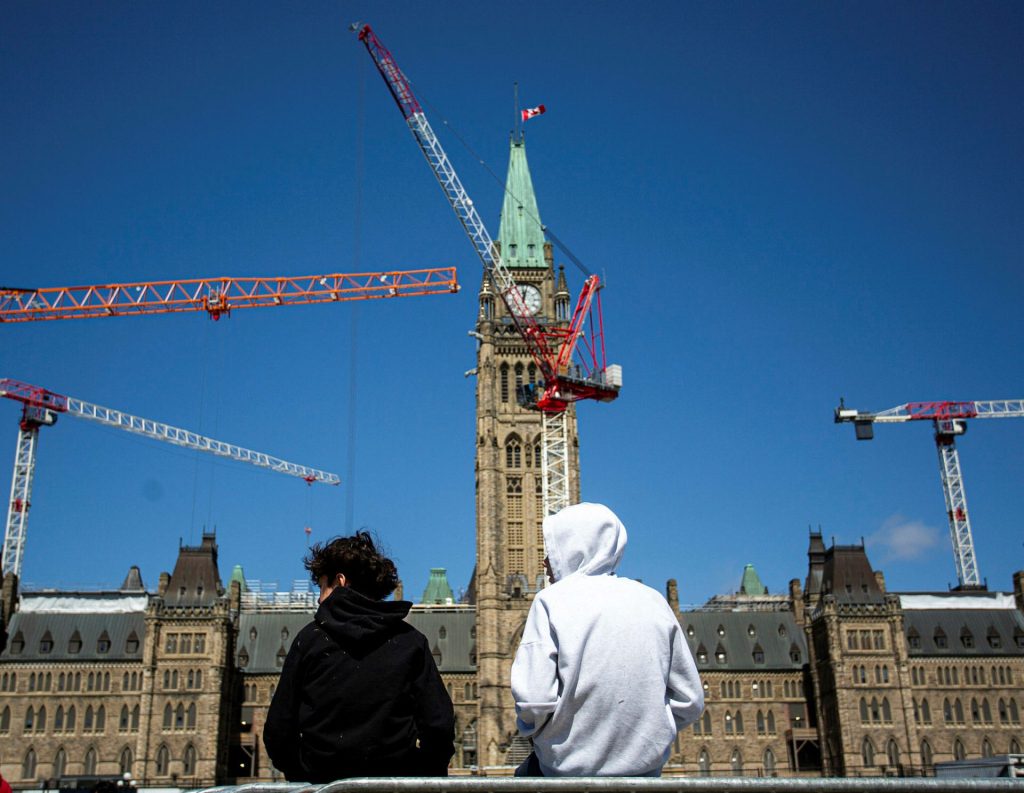Big dig under Centre Block has begun as project spending reaches $1.2-billion

The big dig under Centre Block is now officially underway, with structural walls and columns being removed from its existing basement level, and excavation work having started in its western courtyard.
Required to both connect the historic building with the new three-storey underground Parliament Welcome Centre (PWC) complex being built in Centre Block’s shadow, and to install base-isolation seismic upgrades, the excavations will see workers carve out a roughly 23-metre-deep cavern under much of the building. Altogether, it’s estimated roughly 100,000 cubic metres of bedrock will be removed in the process.
According to Public Services and Procurement Canada (PSPC), structural demolition in the basement and digging in the western courtyard both began in April, with more than “20 Brokk machines and mini excavators (or ‘little diggers’)” set to be used as part of the effort. Excavations are starting in the western courtyard, and will eventually move south to connect to the 23-metre-deep PWC pit, and then east.

The installation of steel support posts in Centre Block’s basement—which will form a key part of the support network that will help hold up the building during excavations—was 89 per cent complete as of the end of the first quarter of 2025, according to PSPC’s latest quarterly report.
As PSPC officials explained to The Hill Times back in March 2023, not all of the roughly 800 steel posts needed to be installed in order for excavations to begin, with only a critical mass—and replacement of at least 50 per cent of the building’s slab—required in order to start digging.
Inside the PWC pit, the last of the three tower cranes being installed along the bottom of the pit is set to start going up over the weekend of May 31, and will be in use by June, according to PSPC.
All three tower cranes are being used to support construction of the three-storey underground structure, which is set to offer 32,000 square metres of new space. The first crane was installed in mid-November, followed by a second in mid-January, and concrete footings for the new structure began to be poured at the end of last year, starting in the west and working east.

Outside the building, exterior masonry renovation work continues. Restoration of Centre Block’s north façade was completed in 2023, and work is currently focused on its east and west façades, which are now 52 per cent and 42 per cent complete, respectively, up from 42 per cent and 30 per cent as of the end of 2024.
Attention has now turned to Centre Block’s iconic south façade, which faces the parliamentary lawns, with scaffolding along that wall starting to be installed as of this month, and set to “continue throughout the remainder of the year.”
“Once in place, the scaffold will be covered by a trompe-l’oeil tarp,” confirmed PSPC.
Similar trompe-l’oeil tarping currently covers the scaffolding erected along Centre Block’s other walls. According to PSPC’s latest annual report on the Long Term Vision and Plan (LTVP) for the Parliamentary Precinct published this past December, such tarping cost roughly $1.5-million in 2023-24, with another $500,000 in related costs planned for 2024-25.

Key project milestones for this spring include completing installation of scaffolding in Centre Block’s internal eastern courtyard (needed in connection with roof rebuild work), finishing “design engagements” in order to finalize decisions and solidify design plans by this fall, and beginning construction of a “new underground duct bank across the front lawn to relocate and upgrade existing infrastructure for future Parliament Hill use.”
Work on this new duct bank began on the western lawn in April, and is set to be finished by next winter. The work is being done in phases “to minimize disruption” to the public, according to PSPC, and the first phase is expected to be completed in time for the lawn to be “restored for Canadians to enjoy by Canada Day.” The next phase, which will affect both sides of the front lawn, will begin in July and continue through to February 2026, with the final phase on the eastern side of the lawn set to start in October and wrap up by January.
Over the summer, project milestones include beginning the restoration of the Official Opposition Leader’s Office’s heritage fresco paintings, as well as restoration of heritage woodwork, marble flooring, and wainscotting throughout Centre Block.
Total project spending reaches roughly $1.2-billion
The Centre Block Rehabilitation Project, which includes both renovation of the historic 100-year-old building and construction of the new underground PWC complex, has an estimated price tag of between $4.5-billion and $5-billion, as announced by PSPC back in June 2021.
As of the end of the first quarter of 2025, almost $1.2-billion of that budget has now been spent, up from the almost $1.1-billion spent by the end of last year.
The department’s latest annual report lists a total of $463.7-million in planned spending on all major capital programs—including the Centre Block Rehabilitation Project, and Block 2’s overhaul—for 2024-25, and $565.3-million for 2025-26. In 2023-24, PSPC spent a total of $459.1-million as part of its “Major Capital Program,” a few million dollars short of its planned spending of $464.8-million for the year.
The MP working group on the LTVP met once during prorogation to discuss Centre Block plans; as a body of the Board of Internal Economy, it was among the few bodies still able to convene during that period. At their Feb. 27 meeting, the group talked about parking requirements for the Hill, and endorsed a number of recommendations, including: that a minimum of 123 surface parking spaces are needed in close proximity to Centre Block, and that the Confederation Building’s gym be made available to both MPs and Senators during renovations to other spaces. The Victoria Building, which many Senators call home, is projected to be emptied for renovations in 2027.
MPs also discussed landscape design plans (with a focus on trees), and got a chance to review a proposed new seating arrangement for the House of Commons Chamber, which needs to be able to accommodate a growing House, but had been pushed to its limits in accommodating 338 MPs pre-renovations. The House has since grown to 343 seats, and is expected to increase further by the time Centre Block reopens for business in 2031-32.
According to the Feb. 27 meeting minutes, the working group “validated the feedback and design principles” of the seating plan presented by PSPC, and agreed that the House administration “would develop a new physical mock-up for comprehensive evaluation and testing that focused on final refinements, work surfaces, material finishes, ergonomics, IT integration, and procedural considerations to ensure optimal functionality and user experience.”
The Senate’s counterpart subcommittee also met during prorogation on Feb. 26, but a copy of that meeting’s minutes won’t be available until after the next time its parent body—the Senate Internal Economy Committee—meets.
The Hill Times






 LICENSING
LICENSING PODCAST
PODCAST ALERTS
ALERTS













